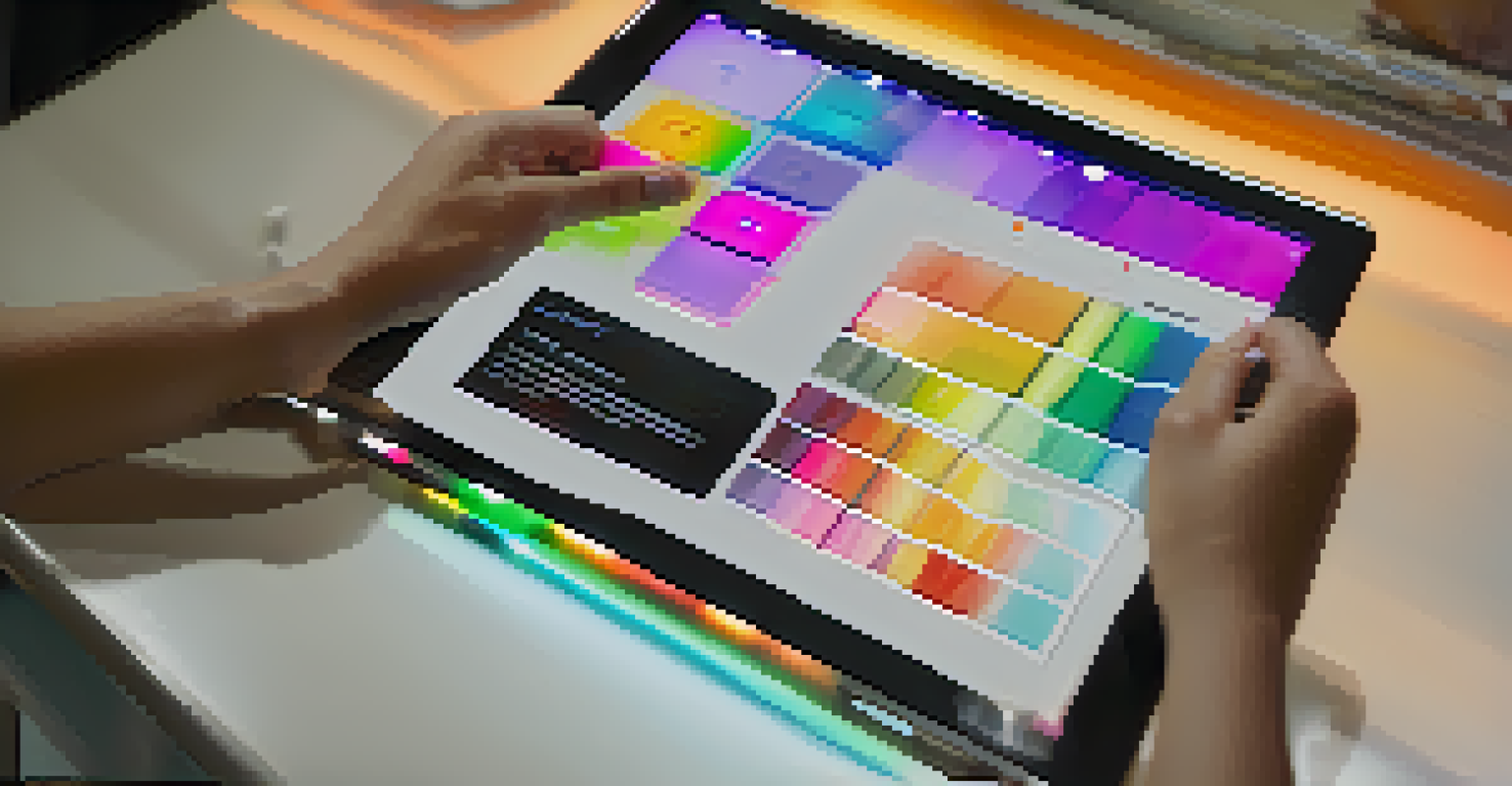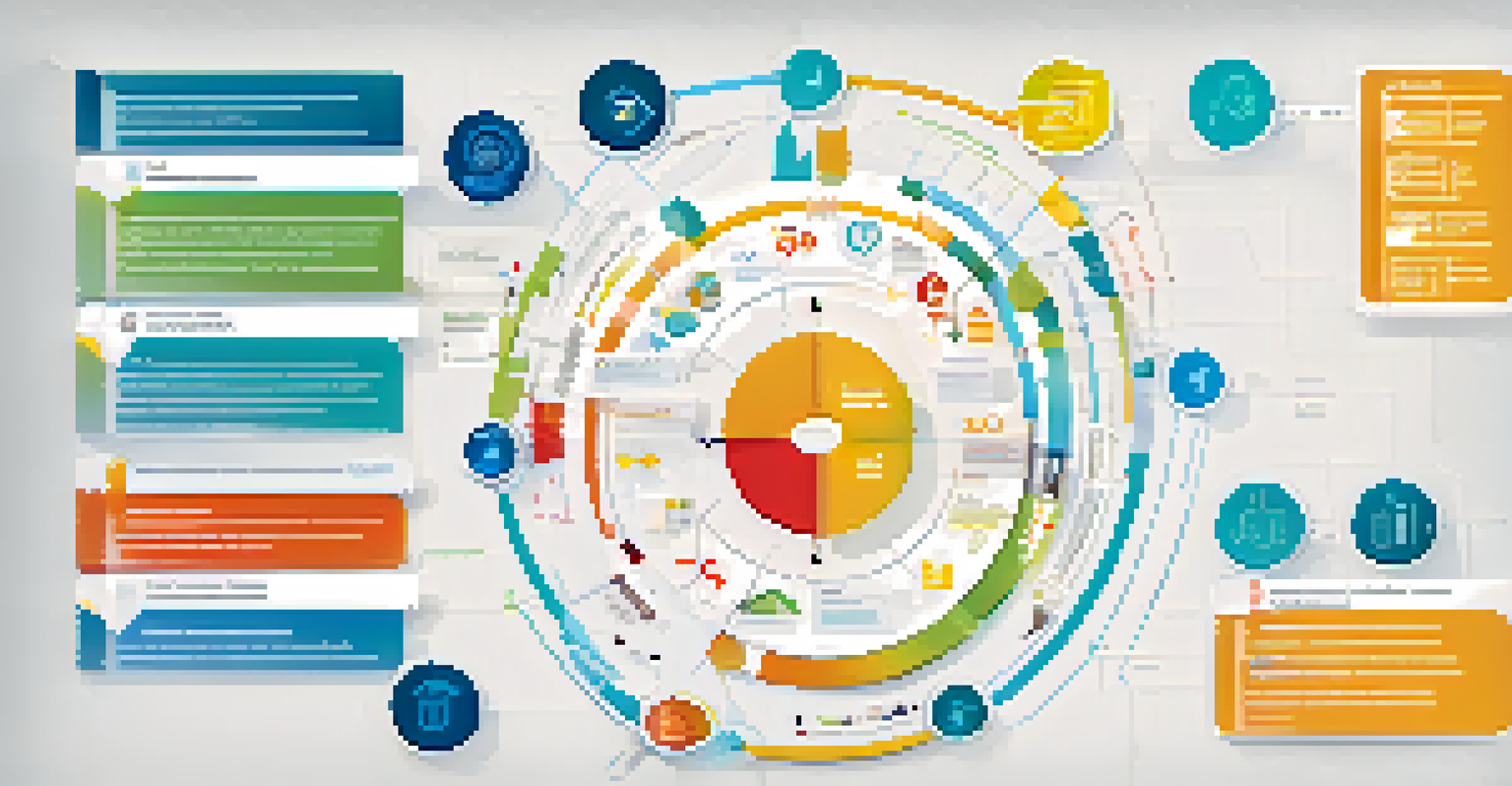Integrating User Experience Design into Agile Methodologies

Understanding User Experience (UX) in Agile Frameworks
User Experience Design, or UX, focuses on optimizing how users interact with products. In Agile methodologies, the end-user's needs must be at the forefront of every iteration. This understanding ensures that teams create solutions that genuinely resonate with users, leading to higher satisfaction rates.
Design is not just what it looks like and feels like. Design is how it works.
Agile is all about flexibility and responsiveness. By integrating UX into Agile, teams can adapt quickly to feedback, ensuring that design changes are made in real-time. This dynamic approach not only enhances the product but also fosters a collaborative atmosphere where user insights are valued.
Ultimately, when UX is prioritized within Agile frameworks, the result is a product that is not only functional but also engaging. This seamless blend of design and development can drive user loyalty and satisfaction, proving that UX is not just a phase but a continuous process.
The Agile Manifesto: A Foundation for UX Integration
The Agile Manifesto emphasizes individuals and interactions over processes and tools. This principle aligns perfectly with UX design, which thrives on understanding user needs and behaviors. By focusing on collaboration and communication, teams can ensure that user experience is a priority.

In practice, this means involving UX designers in all Agile ceremonies, such as daily stand-ups and sprint planning. This involvement allows for continuous feedback and ensures that design considerations are woven into every aspect of the development process. It’s all about creating a dialogue that keeps user experience top of mind.
Prioritize UX in Agile Frameworks
Integrating user experience into Agile ensures that products resonate with users and foster higher satisfaction.
By adhering to the Agile Manifesto while integrating UX, teams can create a culture that values user insight. This synergy ultimately leads to products that not only meet user expectations but also delight them, creating a competitive advantage in the market.
User Research: The Heart of UX in Agile
User research is crucial in understanding the needs and pain points of your audience. In an Agile environment, conducting user research at the beginning of each sprint helps inform design decisions. This iterative approach ensures that products evolve based on real user insights rather than assumptions.
The best way to predict the future is to create it.
Techniques such as surveys, interviews, or usability testing can be employed regularly to gather feedback. By integrating these research methods into the Agile cycle, teams can identify issues early and pivot their designs accordingly. This not only saves time but also resources, as teams can avoid costly mistakes down the line.
Moreover, involving users in the design process fosters a sense of ownership and loyalty. When users see their feedback being implemented, it builds trust and can lead to stronger user engagement, making them feel valued in the product development journey.
Creating User Stories to Enhance UX Design
User stories are a key component of Agile methodologies, providing a simple way to articulate user needs. By framing features from the user's perspective, teams can better understand the functionality that truly matters. This practice ensures that design decisions are aligned with user expectations.
When crafting user stories, it’s essential to include acceptance criteria that reflect UX considerations. For instance, instead of just stating that a button should be clickable, specify that it should be easily identifiable and intuitive to use. This level of detail helps designers create more effective solutions.
User Research Drives Design Decisions
Conducting regular user research in Agile helps teams adapt designs based on real insights rather than assumptions.
Additionally, revisiting and refining user stories throughout the project helps maintain a user-centered focus. As new insights emerge, teams can adapt these stories, allowing for a more fluid design process that responds to changing user needs.
Prototyping: Bridging Design and Development in Agile
Prototyping serves as a vital bridge between UX design and Agile development. Creating low-fidelity prototypes allows teams to visualize concepts quickly and gather feedback before moving into full development. This iterative approach minimizes risks and helps ensure that the final product aligns with user expectations.
In Agile, prototyping can happen at different stages, from early sketches to high-fidelity digital mockups. Each prototype can be tested with real users, providing insights that guide design iterations. This cycle of testing and refining creates a user-centric product that is both functional and appealing.
Moreover, involving development teams in the prototyping phase fosters collaboration and ensures that design intentions are understood. When designers and developers work closely together, they can tackle potential challenges early, resulting in a smoother transition from design to deployment.
Feedback Loops: Continuous Improvement in UX Design
Feedback loops are essential for refining user experience in Agile methodologies. Regularly soliciting feedback from users allows teams to understand what works and what doesn’t. This iterative process ensures that design improvements are based on real user interactions rather than assumptions.
Incorporating feedback sessions at the end of each sprint can yield valuable insights. These sessions allow teams to gather input on completed features, identify areas for improvement, and adjust upcoming iterations accordingly. It’s all about creating a culture of learning and adaptation.
Feedback Loops Enhance UX Iteratively
Establishing feedback loops allows teams to refine user experience continuously by incorporating user input throughout the development process.
Additionally, fostering open communication with users encourages ongoing dialogue. When users feel comfortable sharing their thoughts, it leads to richer insights and a deeper understanding of their needs, ultimately enhancing the overall user experience.
Measuring Success: Metrics for UX in Agile Projects
To gauge the effectiveness of UX design in Agile projects, it's crucial to define success metrics. These metrics can range from user satisfaction scores to task completion rates, offering tangible insights into how well the product meets user needs. By tracking these metrics, teams can make informed decisions about future iterations.
In addition to quantitative data, qualitative feedback through surveys and interviews can provide a more comprehensive view of user experience. Combining both types of data allows teams to understand not just what users are doing but also why they are doing it. This holistic approach enables more targeted improvements.

Ultimately, measuring success in UX should be an ongoing process. As user needs evolve, so too should the metrics used to evaluate experience, ensuring that products remain relevant and engaging over time.